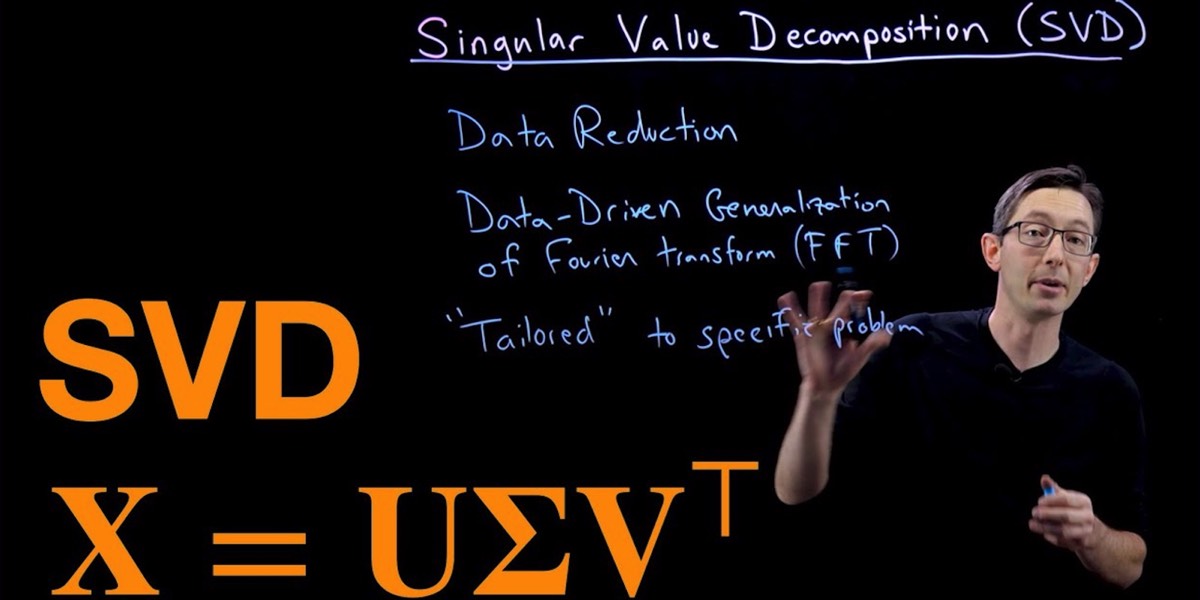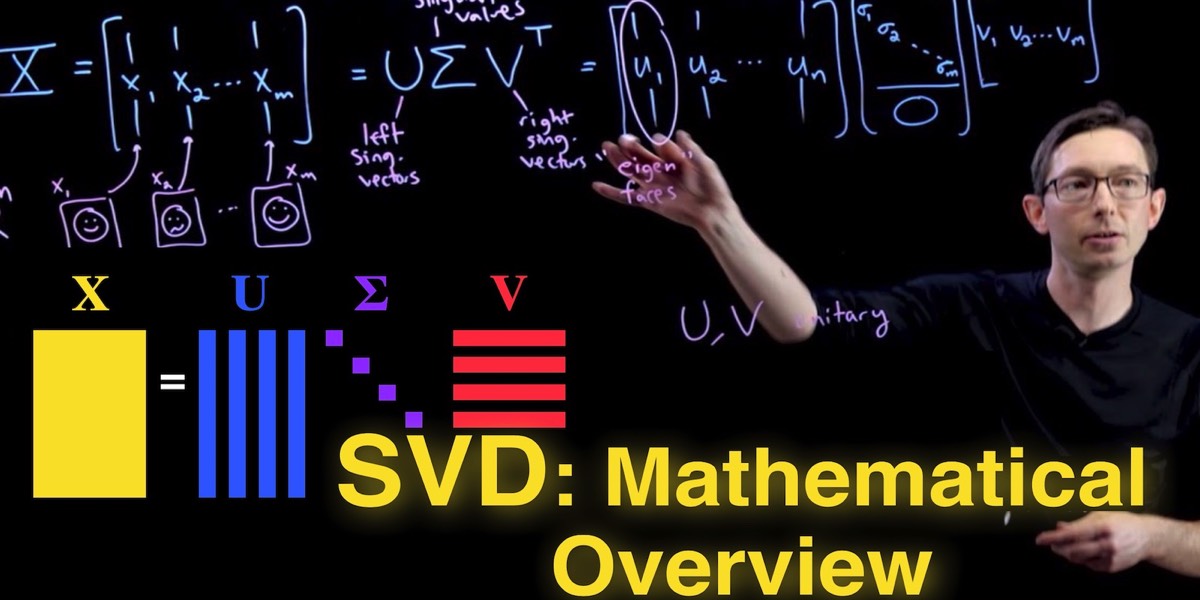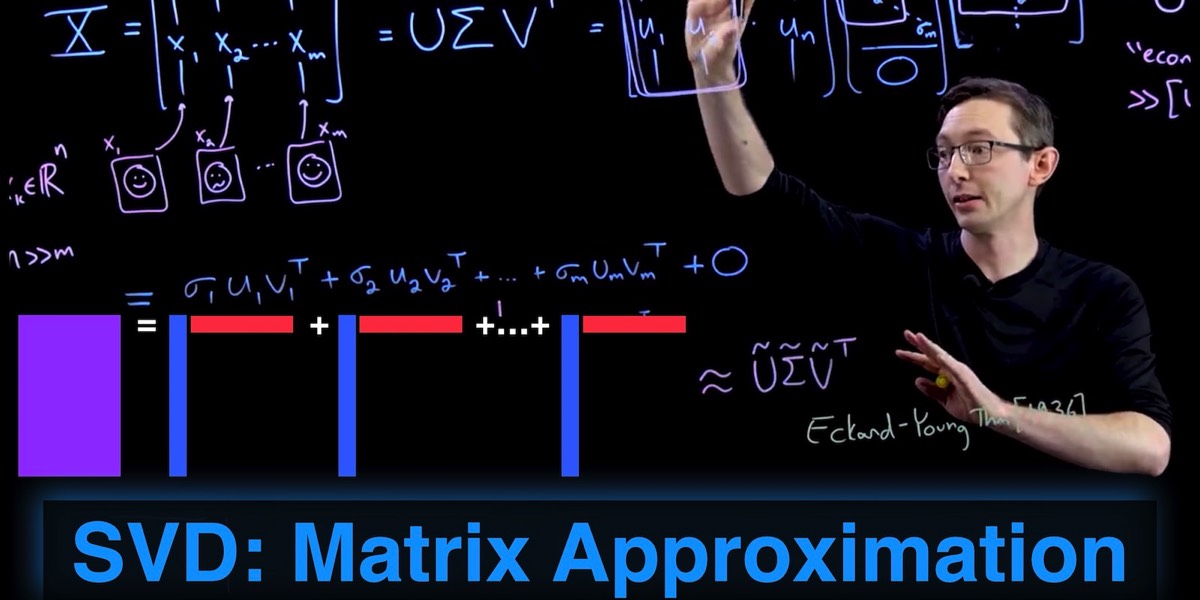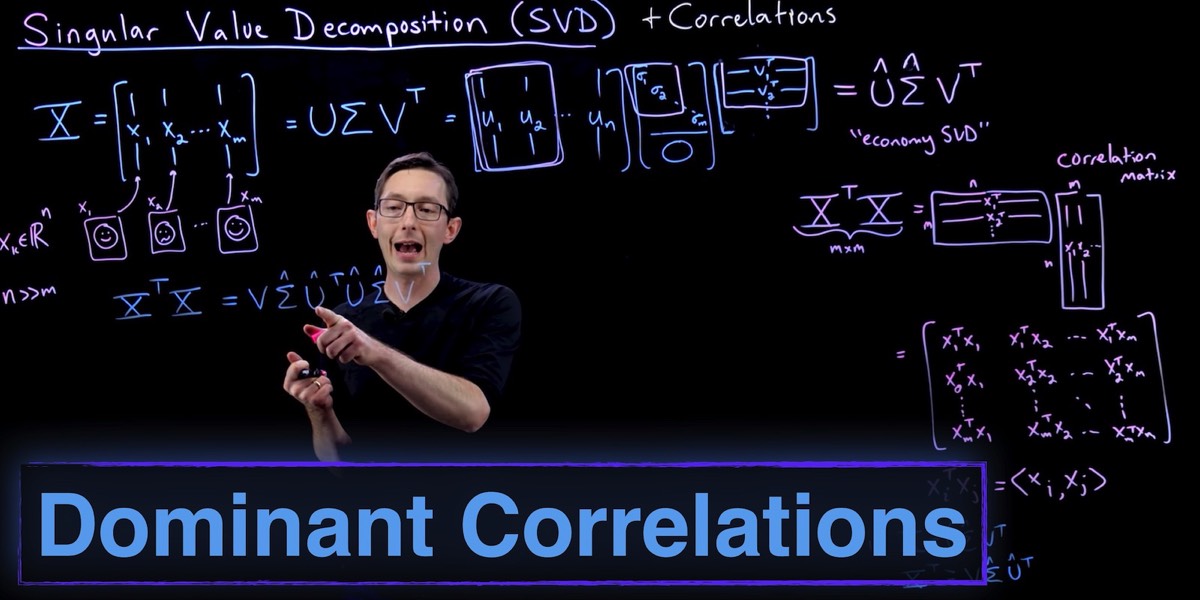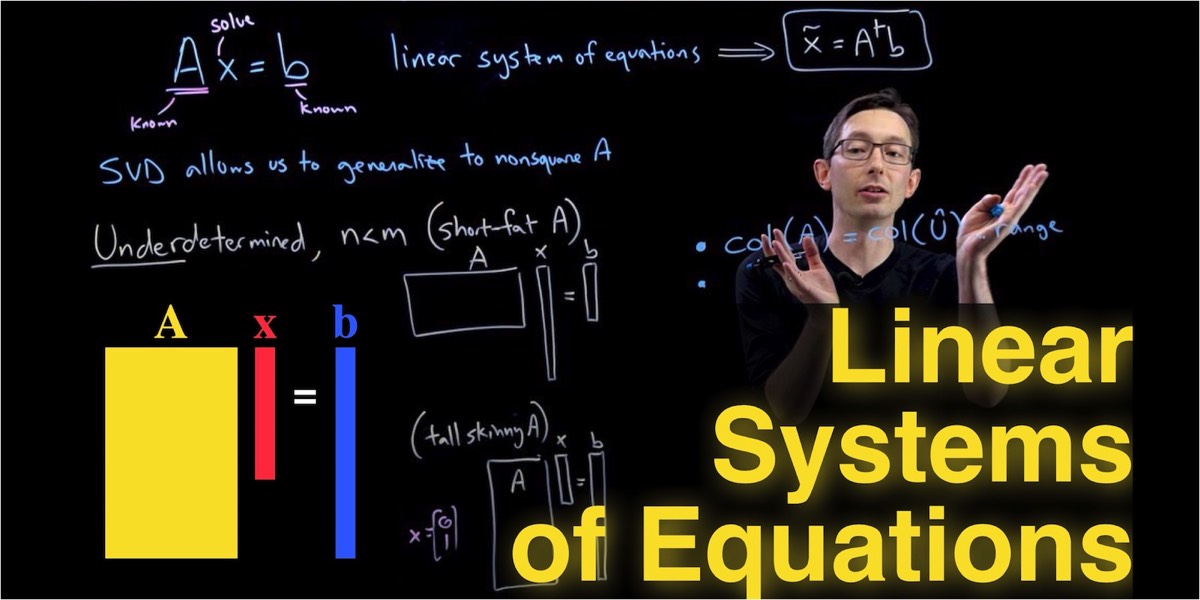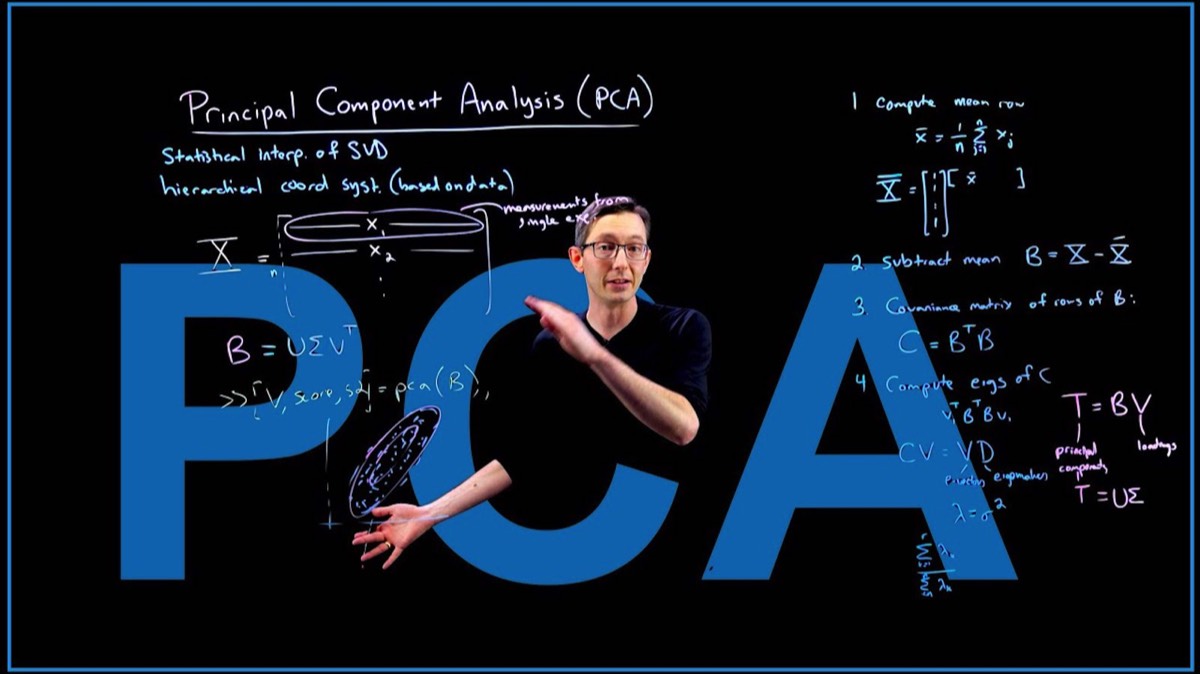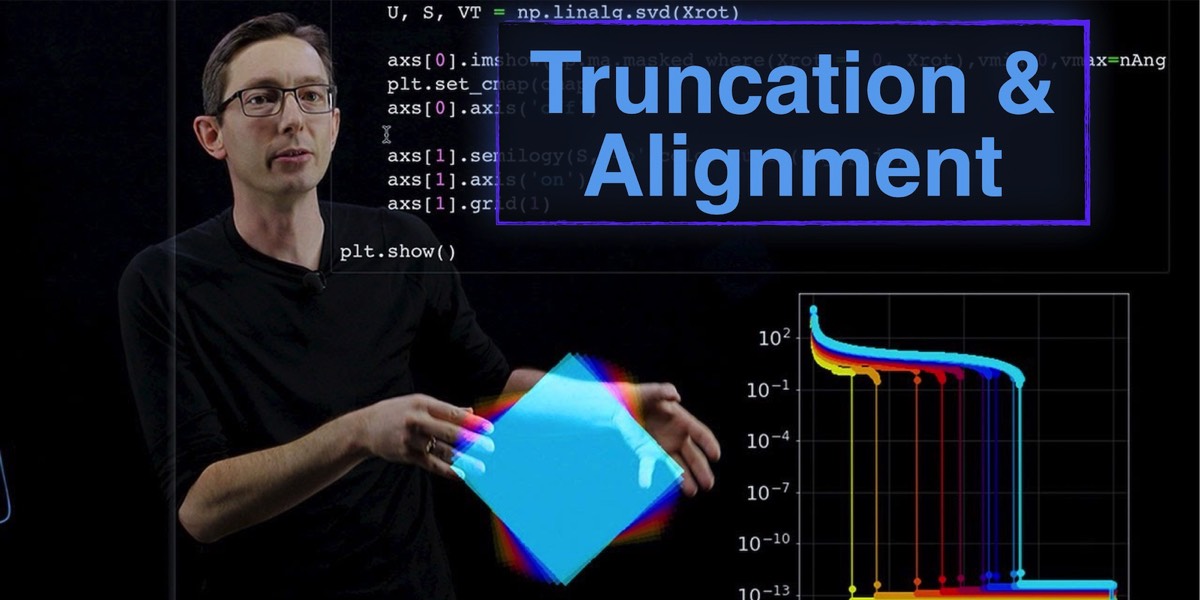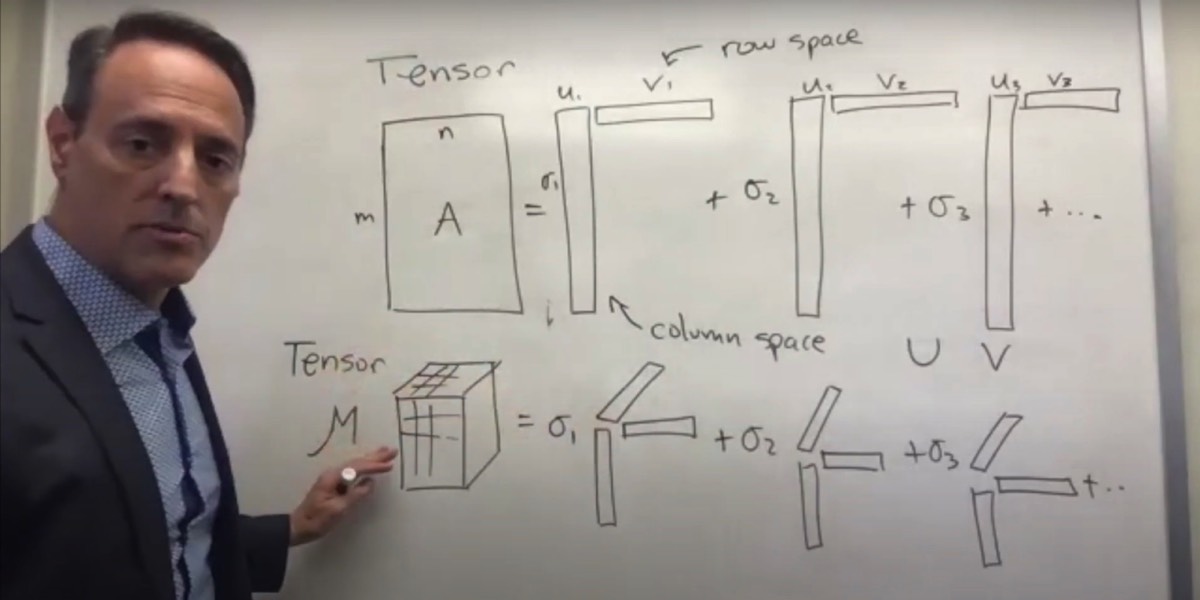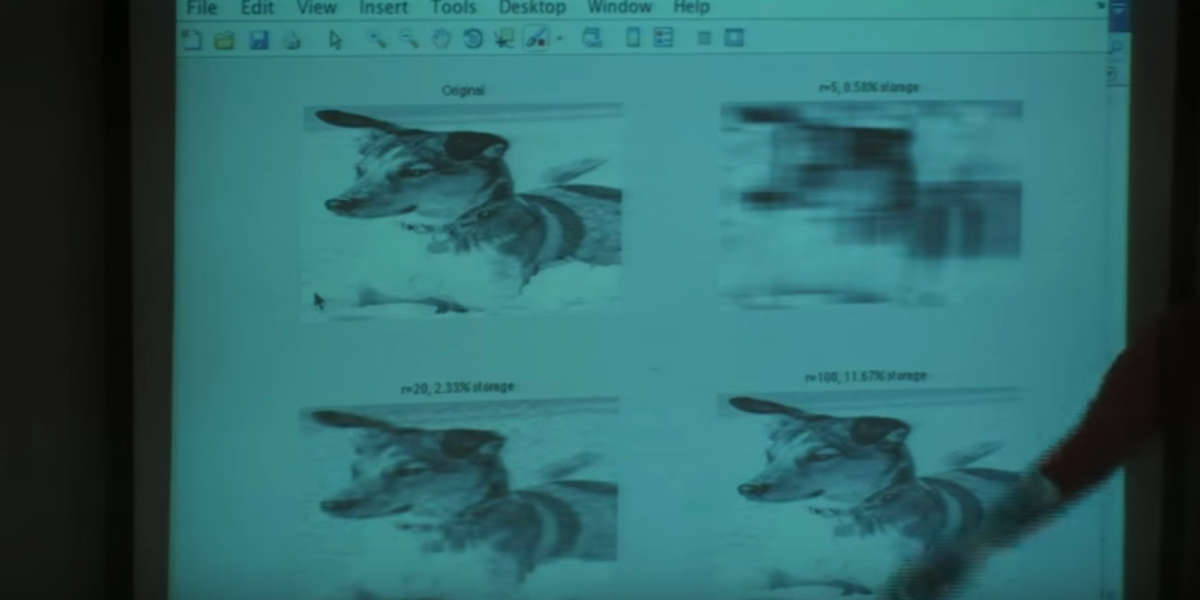The singular value decomposition (SVD) is among the most important matrix factorizations of the computational era, providing a foundation for nearly all of the data methods in this book. We will use the SVD to obtain low-rank approximations to matrices and to perform pseudo-inverses of non-square matrices to find the solution of a system of equations. Another important use of the SVD is as the underlying algorithm of principal component analysis (PCA), where high-dimensional data is decomposed into its most statistically descriptive factors. SVD/PCA has been applied to a wide variety of problems in science and engineering.
In many domains, complex systems will generate data that is naturally arranged in large matrices, or more generally in arrays. For example, a time-series of data from an experiment or a simulation may be arranged in a matrix with each column containing all of the measurements at a given time. If the data at each instant in time is multi-dimensional, as in a high-resolution simulation of the weather in three spatial dimensions, it is possible to reshape or flatten this data into a high-dimensional column vector, forming the columns of a large matrix. Similarly, the pixel values in a grayscale image may be stored in a matrix, or these images may be reshaped into large column vectors in a matrix to represent the frames of a movie. Remarkably, the data generated by these systems are typically low rank, meaning that there are a few dominant patterns that explain the high-dimensional data. The SVD is a numerically robust and efficient method of extracting these patterns from data.
Youtube playlist: Singular Value Decomposition
In many domains, complex systems will generate data that is naturally arranged in large matrices, or more generally in arrays. For example, a time-series of data from an experiment or a simulation may be arranged in a matrix with each column containing all of the measurements at a given time. If the data at each instant in time is multi-dimensional, as in a high-resolution simulation of the weather in three spatial dimensions, it is possible to reshape or flatten this data into a high-dimensional column vector, forming the columns of a large matrix. Similarly, the pixel values in a grayscale image may be stored in a matrix, or these images may be reshaped into large column vectors in a matrix to represent the frames of a movie. Remarkably, the data generated by these systems are typically low rank, meaning that there are a few dominant patterns that explain the high-dimensional data. The SVD is a numerically robust and efficient method of extracting these patterns from data.
Youtube playlist: Singular Value Decomposition
Section 1.2: Matrix Approximation
[ Overview ] [ Frobenius norm ] [ Image compression, Matlab ] [ Image compression, Python ]
Section 1.3: Math. Properties
[ Correlations ] [ Method of Snapshots ] [ Unitary Transforms ] [ Unitary [Matlab] ] [ Unitary [Python] ]
Section 1.4: Linear systems, least-squares, & regression
[ Overview ] [ Least squares ] [ Ax=b ] [ Linear regression ] [ Matlab 1 ] [ Matlab 2 ] [ Python 1 ] [ Python 2 ] [ Python 3 ]
Section 1.5: Principal Component Analysis (PCA)
[ PCA Overview ] [ PCA in Matlab ] [ PCA in Python 1 ] [ PCA in Python 2 ] [ Matrix Completion ]
Section 1.6: Eigenfaces Example
Section 1.7: Truncation and Alignment
[ Optimal Truncation ] [ Truncation in Matlab ] [ Truncation in Python ] [ Data Alignment ] [ Alignment in Matlab ] [ Alignment in Python ]
Section 1.8: Randomized Linear Algebra
[ Overview ] [ Power Iterations & Oversampling ] [ Matlab ] [ Python ]
